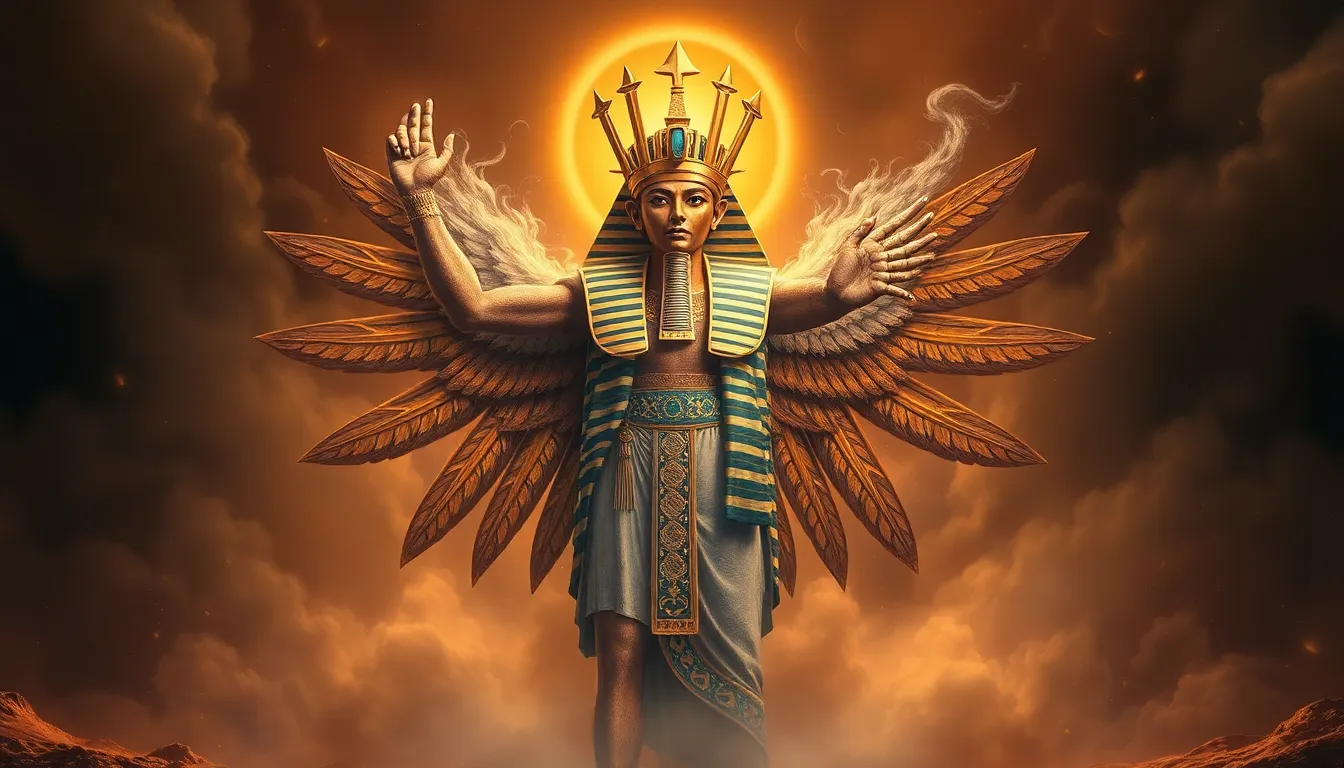The Role of the Divine King in Egyptian Myth and Reality
I. Introduction
The concept of the Divine King in ancient Egypt refers to the pharaoh, who was not only the political ruler but also a divine figure believed to embody the gods on Earth. This duality of role established the pharaoh as a critical figure in the religious and political landscape of ancient Egyptian civilization.
The significance of the Divine King extended beyond mere governance; it encompassed the maintenance of cosmic order, religious rituals, and the relationship between the divine and mortal realms. This article aims to explore the multifaceted role of the Divine King in both mythological narratives and the practical realities of ancient Egyptian society.
II. Historical Context of the Divine Kingship
The concept of divine kingship traces its origins back to the early dynastic period of Egypt, where rulers were seen as living gods, mediating between the people and the divine forces. Over time, this role evolved through various dynasties, adapting to changing political and social contexts.
Key historical figures exemplifying this role include:
- Narmer (Menes) – Often credited with unifying Upper and Lower Egypt, Narmer’s palette depicts him as a divine ruler.
- Khufu (Cheops) – The builder of the Great Pyramid, representing the divine power associated with the afterlife.
- Ramesses II – Known for his military prowess and monumental architecture, embodying the ideal of a powerful Divine King.
III. Mythological Representations of the Divine King
In Egyptian mythology, the connection between gods and kings is profound. The pharaoh was often associated with major deities, reinforcing his divine status. Two primary deities associated with kingship are:
- Horus – The god of the sky, depicted as a falcon, symbolized kingship and protection.
- Osiris – The god of the afterlife, representing resurrection and the continuity of life, which the pharaoh was believed to ensure.
Myths surrounding these deities often illustrated the powers and responsibilities of the Divine King, portraying him as a protector of the land, a bringer of fertility, and a champion against chaos.
IV. The Divine King as a Mediator Between Gods and Humans
The Divine King served as a crucial mediator between the gods and the people. His role in rituals and religious ceremonies was fundamental to maintaining the favor of the gods. This included:
- Performing offerings and sacrifices to appease the gods.
- Conducting festivals that celebrated the divine order.
- Leading the people in prayers and rituals to ensure prosperity.
Moreover, the Divine King had the responsibility of maintaining maat, the cosmic order that governed the universe. His divine status was significant in ensuring societal prosperity, as it was believed that a healthy relationship between the king and the divine would result in abundance and stability for the kingdom.
V. The Divine King in Egyptian Art and Architecture
The depictions of the Divine King in Egyptian art and architecture provide insight into the cultural perception of kingship. Notable representations include:
- Temple Reliefs – Depictions of the pharaoh engaging with gods, showcasing his divine role.
- Tomb Paintings – Illustrations of the king’s journey to the afterlife, emphasizing his eternal nature.
- Monumental Architecture – Structures like pyramids and temples were built as a testament to the king’s power and divine connection.
The symbolism in these artistic representations often included iconography that reinforced the pharaoh’s divine authority, such as the use of the ankh, the symbol of life, and the sistrum, a musical instrument associated with the goddess Hathor.
VI. The Reality of Kingship: Governance and Authority
In addition to their divine attributes, the Divine King was a political figure with substantial power and administrative duties. This included:
- Establishing laws and ensuring their enforcement.
- Overseeing agricultural production and resource management.
- Engaging in diplomacy and military campaigns to protect the kingdom.
The relationship between the king and his subjects was complex, as the king was seen both as a divine protector and a ruler who had to address the needs of the people. Challenges faced by the Divine King included natural disasters, famine, and social unrest, which tested his authority and divine legitimacy.
VII. The Fall of the Divine King Concept
The concept of divine kingship began to decline in later periods due to various factors, including:
- Invasions and foreign rule that disrupted traditional power structures.
- The rise of new religious beliefs that challenged the established order.
- Political fragmentation that weakened the central authority of the pharaoh.
This shift in religious beliefs and political structures marked the decline of the Divine King’s absolute authority, leading to a transformation in the governance of Egypt.
VIII. Conclusion
The dual role of the Divine King in ancient Egypt encompassed both myth and reality, illustrating the complexities of governance and spirituality. The lasting impact of the Divine King is evident in contemporary understandings of ancient Egyptian civilization, providing a lens through which we can appreciate the intertwining of religion, politics, and culture.
For further research, exploring the local variations of kingship across different regions of Egypt, as well as the role of the Divine King in later periods, could provide deeper insights into this fascinating topic.




